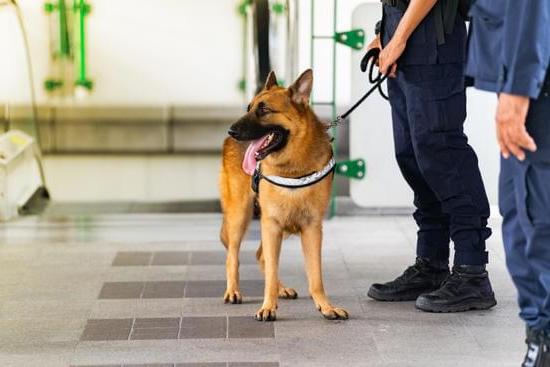If you’ve ever wondered how to train a dog to herd sheep, you’re in the right place. Herding has been an essential practice for centuries, and dogs have played a crucial role in this activity. In this article, we will explore the history and purpose of sheep herding and provide valuable information on training techniques, the best dog breeds for herding, understanding instincts and behavior, as well as common challenges and safety considerations.
The tradition of using dogs to help manage and control large flocks of sheep dates back hundreds of years. Whether for practical or competitive purposes, the skills of both the shepherd and the herding dog have been essential in ensuring the well-being of the flock. Understanding the historical significance of sheep herding will give us insight into why certain dog breeds are particularly well suited for this task.
In addition to discussing the history and purpose of sheep herding, we will also delve into the best dog breeds for this activity. Certain breeds have been specifically developed for their intelligence, agility, and natural instinct to work with livestock. Understanding these specific traits will help you choose the right breed if you’re considering training a dog for herding purposes.
The Best Dog Breeds for Herding Sheep
When it comes to herding sheep, not all dog breeds are created equal. Some breeds are specifically bred for their herding instincts and make excellent partners for shepherds in managing flocks. If you are considering training a dog to herd sheep, it’s important to choose the right breed that is best suited for this task.
Border Collie
The Border Collie is arguably the most popular and well-known breed when it comes to herding sheep. Known for their intelligence, obedience, and intense focus, Border Collies have been bred for generations to work on farms and ranches, making them excellent herding dogs.
Australian Shepherd
Another popular choice for herding sheep is the Australian Shepherd. Despite their name, these dogs were actually developed in the United States and were originally used as working dogs on ranches. With their high energy levels and natural instinct to herd, Australian Shepherds excel at controlling livestock.
German Shepherd
While German Shepherds are more commonly associated with police work and protection duties, they also have a strong herding instinct. Their loyalty, intelligence, and strength make them capable herders that can handle the challenges of working with sheep.
When choosing a breed for herding sheep, it’s important to consider factors such as the dog’s energy level, temperament, and natural instincts. Each breed has its own unique characteristics that make them suitable for different types of herding work. Understanding these differences will help you select the best dog for your specific needs when training them how to herd sheep.
Understanding the Instincts and Behavior of Sheep Dogs
Sheep herding is an ancient practice that has been used for centuries to move and control groups of sheep. The role of a sheep dog in herding is crucial, as they help to gather, drive, and keep the flock together. Understanding the instincts and behavior of sheep dogs is essential for successful training and effective herding.
First and foremost, it’s important to recognize that certain dog breeds are more predisposed to herding instincts than others. For example, border collies, Australian shepherds, and German shepherds are recognized for their innate herding abilities. These breeds have been selectively bred over generations to work closely with humans in managing livestock.
In addition to breed predisposition, understanding the instincts and behavior of sheep dogs involves recognizing their natural abilities such as stalking, chasing, gripping or nipping at the heels of the sheep – without causing harm – as well as their instinct to respond to direction from the shepherd. These behaviors are deeply ingrained in these dogs and play a vital role in how they interact with and manage a flock of sheep.
| Herding Instincts | Sheep Dog Breeds |
|---|---|
| Stalking | Border Collie |
| Gripping/Nipping | Australian Shepherd |
| Response to Direction | German Shepherd |
Basic Training Techniques for Herding Sheep
Building a Strong Foundation
When training a dog to herd sheep, it is essential to start with basic obedience training. This includes teaching the dog commands such as sit, stay, come, and heel. Building a strong foundation of obedience will make it easier to teach more advanced herding commands later on. It is also important to socialize the dog with the sheep from an early age so that they can become familiar with each other’s presence.
Teaching Basic Herding Commands
Once the dog has mastered basic obedience, it is time to introduce them to basic herding commands such as “come by” and “away.” These commands are used to direct the dog’s movement around the sheep in a clockwise or counterclockwise direction. The key is to use positive reinforcement, such as treats and praise, when the dog successfully follows these commands.
Working on Leash and Off-Leash Skills
It is important for a herding dog to be able to work both on leash and off leash. Working on leash allows you to have more control over the dog’s movements, while off-leash work simulates real-life herding situations. Gradually introducing off-leash work in a controlled environment will help build the dog’s confidence and reliability in following commands while herding.
Training a dog to herd sheep requires patience, consistency and dedication. By following these basic training techniques and using positive reinforcement, you can set your herding dog up for success in their role as a valuable partner in managing livestock.
Advanced Herding Commands and Techniques
After mastering the basic training techniques for herding sheep, it is important to advance your dog’s skills with more advanced commands and techniques. These advanced commands will allow you to have more control over your dog and improve their ability to effectively herd the sheep.
Some of the most important advanced commands for herding dogs include “walk-up,” “steady,” “come bye” and “away.” The “walk-up” command directs the dog to approach the sheep calmly and steadily, without causing unnecessary stress or excitement among the flock. The “steady” command instructs the dog to maintain a consistent pace while herding the sheep, preventing them from moving too quickly or aggressively.
The “come bye” command tells the dog to circle around the sheep in a clockwise direction, while the “away” command prompts them to circle in a counterclockwise direction.
In addition to these commands, there are several advanced herding techniques that can be beneficial for both your herding dog and the sheep. For example, teaching your dog how to work individual animals within a flock can be useful for separating specific sheep, moving them through gates or into pens, and managing their behavior more effectively.
Overall, by incorporating these advanced commands and techniques into your training program, you can greatly improve your dog’s effectiveness as a herder while also ensuring the safety and well-being of the sheep they are working with.
| Advanced Herding Commands | Benefits |
|---|---|
| Walk-up | Directs dog to approach sheep calmly and steadily |
| Steady | Instructs dog to maintain consistent pace while herding |
| Come Bye/Away | Prompts dog to circle around in clockwise/counterclockwise direction |
The Importance of Positive Reinforcement in Herding Training
Positive reinforcement is a crucial aspect of training a dog to herd sheep. This method focuses on rewarding desired behaviors, making it an effective tool for teaching your herding dog the skills necessary for successful sheep herding. Here are some key points to consider when using positive reinforcement in herding training:
- Use treats: When your dog exhibits the desired behavior, such as successfully guiding a group of sheep, reward them with their favorite treats. This will reinforce the behavior and motivate them to continue herding effectively.
- Verbal praise: Dogs respond well to verbal affirmations, so be sure to praise your dog with enthusiastic and encouraging words when they demonstrate the correct herding behavior.
In addition to using positive reinforcement during training sessions, it’s important to maintain a consistent and patient approach. Keep in mind that every dog learns at their own pace, so be prepared to adapt your training methods to suit your dog’s individual needs.
Consistency Is Key
Consistency is essential in positive reinforcement training. Use the same commands, rewards, and cues each time you work with your herding dog. This will help them understand what is expected of them and reinforce their learning. Remember that building a strong foundation through consistent positive reinforcement will set the stage for successful sheep herding in the future.
Common Challenges in Herding Training and How to Overcome Them
Training a dog to herd sheep can be a challenging but rewarding endeavor. There are several common challenges that trainers may encounter when teaching their canine companions to work with sheep. Overcoming these obstacles is crucial for a successful herding training program. Here are some common challenges in herding training and how to overcome them:
1. Distractions: Dogs can easily become distracted, especially when working with animals as lively as sheep. It’s important to gradually introduce distractions during training sessions to help the dog focus on the task at hand.
2. Over-excitement: Some herding dogs may get too excited when working with sheep, which can lead to erratic behavior and difficulty following commands. Using calming techniques and consistent reinforcement can help overcome this challenge.
3. Lack of responsiveness: In some cases, herding dogs may not respond well to basic commands or may exhibit stubborn behavior. This can be addressed through consistent training, positive reinforcement, and the use of clear, firm communication.
To address these challenges and successfully train a dog to herd sheep, trainers should implement specific strategies and techniques in their training program:
By understanding these common challenges and implementing effective strategies for overcoming them, trainers can improve their success rates in training dogs to herd sheep.
Ultimately, patience, consistency, and positive reinforcement play a crucial role in overcoming these challenges and creating a successful herding dog training program. With dedication and perseverance, both the trainer and the dog can work together to achieve proficiency in sheep herding.
Tips for Maintaining a Successful Herding Dog Training Program
Maintaining a successful herding dog training program requires consistency, patience, and commitment. Once your dog has learned the basic herding commands and techniques, it is essential to continue practicing and reinforcing these skills regularly. This not only helps to solidify your dog’s understanding of its role as a sheep herder, but also strengthens the bond between you and your canine companion.
One tip for maintaining a successful herding dog training program is to incorporate regular training sessions into your dog’s daily routine. Consistency is key when it comes to reinforcing the behaviors and commands necessary for successful sheep herding. By setting aside time each day to work with your dog on its herding skills, you can ensure that these abilities remain sharp and reliable.
In addition to regular training sessions, it is important to provide your herding dog with plenty of mental and physical stimulation. Engaging activities such as agility courses, obedience trials, or even simple games of fetch can help keep your dog mentally sharp and physically fit. This not only contributes to their overall well-being, but also helps maintain their focus during herding tasks.
Furthermore, it is important to keep an open line of communication with other experienced herders and trainers in order to gather tips and advice on how best to maintain a successful herding dog training program. Seeking out guidance from those who have extensive experience in training dogs to herd sheep can provide valuable insights into effective training techniques and potential challenges that may arise.
By staying connected with the larger herding community, you can continue to refine your approach to training and ensure that your dog remains a skilled and capable sheep herder.
Safety Considerations for Herding Dogs and Sheep
In conclusion, training a dog to herd sheep is a challenging but rewarding endeavor that requires an understanding of the history and purpose of sheep herding, as well as the instincts and behavior of sheep dogs. The best dog breeds for herding sheep include border collies, Australian shepherds, and German shepherds, among others.
Understanding the natural instincts of herding dogs is crucial in training them effectively. Using basic and advanced training techniques, such as flank commands and balance work, can help develop a successful herding dog. It’s important to note that positive reinforcement is key in this type of training, as it helps maintain the bond between the dog and its handler.
Common challenges in herding training may arise, but with patience and consistent practice, they can be overcome. It’s crucial to maintain a focused and safe training program to ensure the well-being of both the herding dog and the sheep. Overall, knowing how to train a dog to herd sheep requires dedication, knowledge, and a deep understanding of the relationship between dogs and livestock.
Frequently Asked Questions
How Long Does It Take to Train a Dog to Herd Sheep?
The time it takes to train a dog to herd sheep can vary depending on the breed, age, and individual temperament of the dog. Typically, it can take several months of consistent training to develop the necessary skills for herding.
How Do You Train a Dog to Be a Herding Dog?
Training a dog to be a herding dog requires patience, consistency, and positive reinforcement. It involves teaching basic obedience commands and then introducing the dog to livestock in a controlled environment. Over time, the dog learns how to move and control the animals without being too aggressive.
How Do Sheep Dogs Learn to Herd Sheep?
Sheep dogs learn to herd sheep through a combination of instinct and training. Their natural herding instincts are honed through exposure to livestock and guidance from experienced trainers or older dogs. Through repetition and positive reinforcement, they develop the skills needed to effectively manage and control sheep.

Welcome to the blog! I am a professional dog trainer and have been working with dogs for many years. In this blog, I will be discussing various topics related to dog training, including tips, tricks, and advice. I hope you find this information helpful and informative. Thanks for reading!





